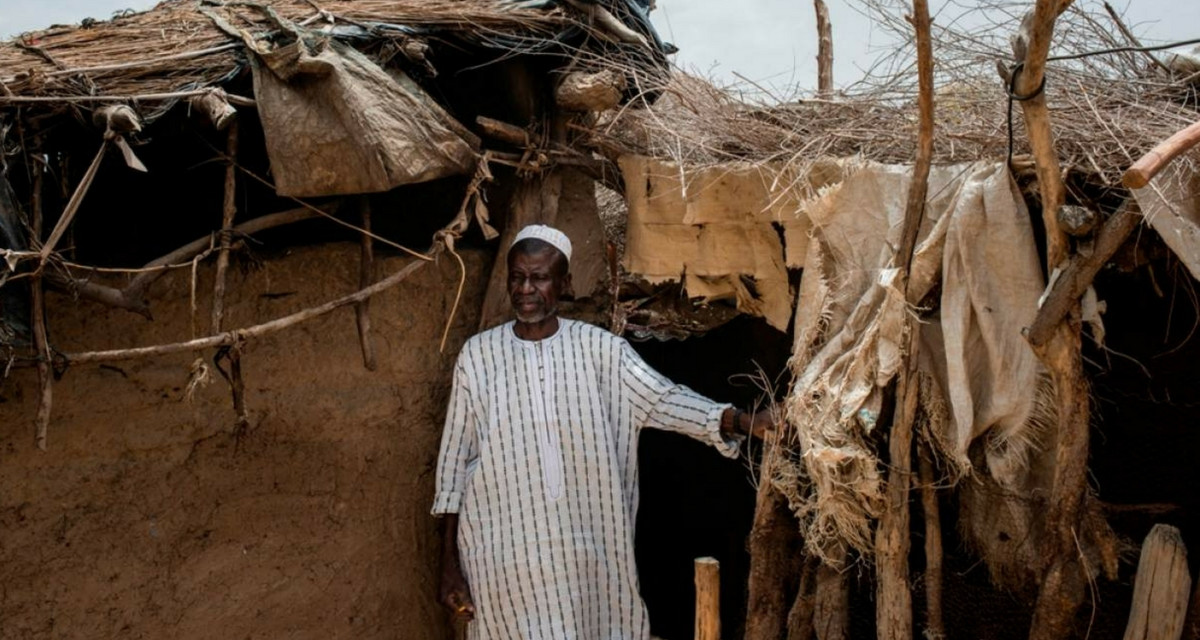
Nouhoun Tigana waves a skinny pigeon away from the chicken coop he is guarding. He doesn’t know for sure what the weather will be like tomorrow – other than that it’s likely to be intensely hot again.
He says, “The heat is so bad now that we can’t work between noon and 3 p.m.”
Mr. Tigana lives in Kolondialan, in Mali’s Koulikoro Region, which is found in the west of the country. Farmers in this area, and across rural Mali, are grappling with recurring periods of drought that destroy crops, as well as temperatures as high as 50 degrees Celsius, which can make it difficult to work.
But Mr. Tigana says, “We can’t sit here and do nothing. We have to find a way to get by.”
Mr. Tigana may not be able to predict tomorrow’s weather, but he has an idea of what conditions might look like 30 years from now in his village, located near the southern fringes of Africa’s Sahel zone.
That’s because last year Mr. Tigana, along with 30 other farmers, boarded a Jeep and headed off to the northeast for a bit of “time travel” – a visit to the Mopti Region that today has the kind of conditions experts believe Kolondialan can expect in decades to come.
The International Crops Research Institute for the Semi-Arid Tropics, also known as ICRISAT, organized the tour as part of Mali’s “farms of the future” project.
Bouba Traoré is a scientist at the research institute. He explains: “The idea is to get communities to learn from each other by visiting an environment that is similar to their own – so based on farming – but not identical in terms of climate conditions.”
He adds, “It’s like they are visiting their ‘future village,’ if temperatures were to continue to rise and rainfall to decrease.”
Over the past year, with the help of climate experts and an online weather prediction tool, Mr. Tigana and other local farmers have helped identify villages further north – such as Bankass and Koro – that are experiencing the kind of climate conditions Kolondialan could face in a few decades.
Mr. Traoré says men and women from Kolondialan and a nearby village then travelled to those northern villages to understand how residents there are coping with hotter temperatures and less rain.
He explains: “We hope that by seeing how farmers have adapted to a hotter climate, for example through smarter farming techniques and new ways of sharing weather information, visitors will implement these innovations at home.”
After the visit, Mr. Traoré says each participating village received a grant of 1 million CFA francs (about $1,800 US) to spend on whichever adaptation effort it chose.
Mr. Tigana’s community chose to try poultry. Farmers will raise and sell chickens for profit at the market as a way to adapt to higher temperatures and crop losses.
Mr. Traoré explains that a household gets a loan of 50,000 CFA francs (about $90 US) for the next six months. Activities vary from one village to another, depending on the farmers’ skills and the resources available.
For example, in Sibougou – another village in central Mali – community members chose to build stoves made of mud and straw, which burn less wood. They are also building insulated baskets that conserve the sun’s heat to cook food even when there is no sun.
Some farmers in other villages use the money to raise livestock. Others are choosing to protect maize harvests more effectively by hanging them in trees, out of reach of pests, livestock, and floods.
For now, Mr. Traoré hopes to repeat the “farms of the future” experience in other regions of Mali as well as neighbouring countries.
This story is based on an article from Thomson Reuters Foundation titled, “With a bit of ‘time travel,’ Malians prepare farms of the future.” and was featured in the latest edition of Barzawire, a service of Farm Radio International, a Partner in GFAR. To read the original article, go to: http://news.trust.org/item/20170605001647-0n9ed/
Photo: Nouhoun Tigana guards a chicken coop in Kolondialan, central Mali.
Photo credit: Thomson Reuters Foundation/ Alex Potter
